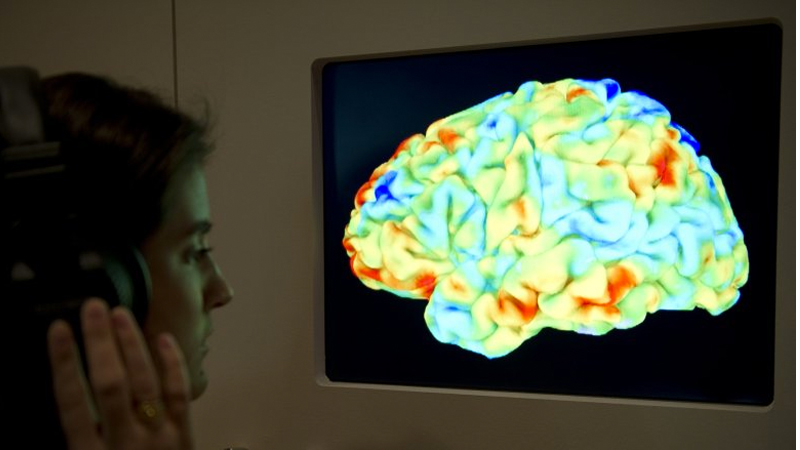10 Facts About Autonomous Sensory Meridian Response & Triggers That Cause It
The ASMR (Autonomous sensory meridian response) term is believed to have been coined in 2010 by Jennifer Allen. Understand how it works and other factors.

Autonomous sensory meridian response (ASMR) is a sensation that begins on the scalp and moves down the back of the neck and upper spine. It signifies the subjective experience of low-grade euphoria identified by a combination of positive feelings and a tingling sensation on the skin. It is triggered by visual stimuli and through intentional attention control. ASMR is the latest sensation running on Youtube.
YouTubers create videos aiming to relax viewers and help them fall asleep. They use calming techniques, different sounds, and impressive binaural microphones. The ASMR phenomenon didn’t happen overnight. As YouTube videos grew in popularity, the internet claimed to experience tingles with specific videos.
Tingling sensations is not a new feeling. The term ASMR was introduced by Jennifer Allen. She created a Facebook group in 2010, and since then, she has been active in ASMR and continues to be an important part of the community.
Triggers

ASMR is most commonly auditory and visual and can be encountered through the interpersonal interactions of daily life. It is often triggered by exposure to specific media (audio and video).
Stimuli that can trigger ASMR as reported by those who experience it include loudly chewing, biting foods, whispering voice, a change in temperature at the skin, listening to certain types of music, hand movements, and receiving personal attention.
Auditory
Those who have experience with ASMR report that non-vocal ambient noises performed through human activities are also triggers of ASMR. The crushing of eggshells, manipulating fabric, brushing hair are the best examples of non-vocal ambient noises.
Susceptibility
Those experiencing ASMR have higher Big Five personality trait scores in openness-to-experience and neuroticism. The emotional experience of ASMR overlaps with and may be partially explained by characteristics associated with mindfulness.
Binaural recording
Several ASMR video creators use binaural recording techniques to simulate the acoustics of a 3D environment. Binaural recordings are made using microphones like stereo recordings. In Binaural recordings, two microphones are designed to mimic ears on humans.
In several cases, microphones are separated the same distance as ears in humans. Listening to a binaural recording through headphones simulates the binaural hearing by which people listen to live sounds.
Comparison and Link With Other Phenomenon

Synthesia
The reports have precipitated a comparison between ASMR and synesthesia. It is a condition identified by the excitation of one sensory modality by stimuli that normally simulates one another. People with other types of synthesis report "seeing sounds" in the case of auditory-visual synesthesia or "tasting words" in the case of lexical-gustatory synesthesia.
Misophonia
People relate ASMR to Misophonia in many ways. For instance, those who suffer from misophonia report specific human sounds, including breathing, whispering, and eating. Several anecdotal reports have claimed to have both misophonia and ASMR at a web-based user interface and discussion locations.
Lesser Known Facts About ASMR (Autonomous Sensory Meridian Response)

Here are amazing facts about ASMR that everyone should know.
- This phenomenon didn’t happen overnight. ASMR remained a fringe corner of the internet and became popular over the years, with YouTubers making videos directed at those who experience tingles.
- YouTubers who create videos for ASMR are called ASMRtists. In the beginning, they did it for fun and later became a part of a shared community.
- No one knows how many people fit in this category. A psychological study found a link to certain personality traits. ASMR people can score higher on Openness to Experiences and Neuroticism and lower on the Conscientiousness and Agreeableness sections of the Big Five Inventory Scale.
- Many ASMRtists insist ASMR is not sexual. They consider it as a soothing experience similar to prayer and meditation.
- With ASMR having a cultural moment, marketers have wasted their time making it work for them. Several magazines and advertising have hopped on the ASMR bandwagon. W magazine has a complete web series of ASMR videos featuring celebs like Kate Hudson.
- The painter on PBS in the early 80s and 90s turned into an ASMR youtube star. Some people even called him the Godfather of ASMR. His calming voice and presence are considered to be triggering.
- The Autonomous sensory meridian response offers several health benefits. According to studies, ASMR reduces heart rate and has benefitted the physical and mental health of a human.
- The most popular type of ASMR video is roleplay. In this type, YouTubers act in various situations, including doctor visits and haircuts.
- People who experience insomnia and depression have flocked to ASMR videos to help them identify their symptoms. This is another reason why it became popular. While some people said to experience ASMR regularly, others have said it has stopped for them. This phenomenon is called ASMR immunity. Several ASMRtists have particularly put videos for this problem to make people aware of this community.
- Other names for ASMR are brain orgasm, brain tingles, and whisper porn. Those who experience the ASMR sensation can be stimulated at a salon when a stylist is shampooing his/her hair. They can also be described by a soft-spoken description of a subtle movement or of virtual massage.
Final Words
ASMR works differently & varies from person to person. While some people enjoy role-plays in which people give attention, others like videos that show tasks such as stirring a bowl of soup or crinkling wrapping paper.
Do you know or have experienced Autonomous Sensory Meridian Response? Do you know how to manage it? Share your views below!
Popular Posts
What Is Trypophobia – A Disgust More Than Fear
"I can't really face small, irregularly or asymmetrically placed holes, they make me like, throw up in my mouth, cry a little bi...
Chandan Roy
16 Interesting Facts About Ambidextrous People
A lefty or left-handed uses his left hand more naturally and dominantly than the right hand. And the righty or right-handed is o...
Ethan Stephans
20 Interesting Facts About Meteoroid, Meteor and Meteorite
Watching celestial objects is a true delight. It is still fun to catch a sight of shooting stars when we grow up. A second of th...
Swati Bhandari








